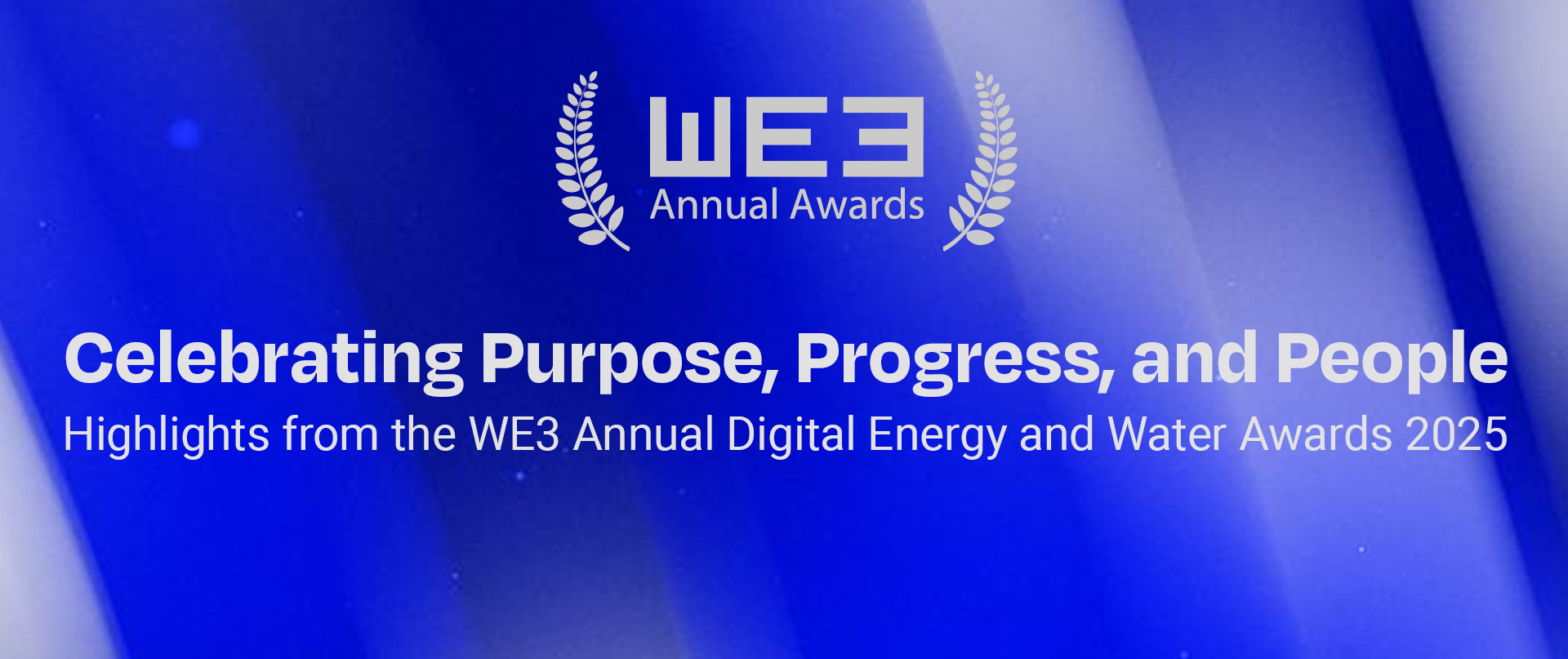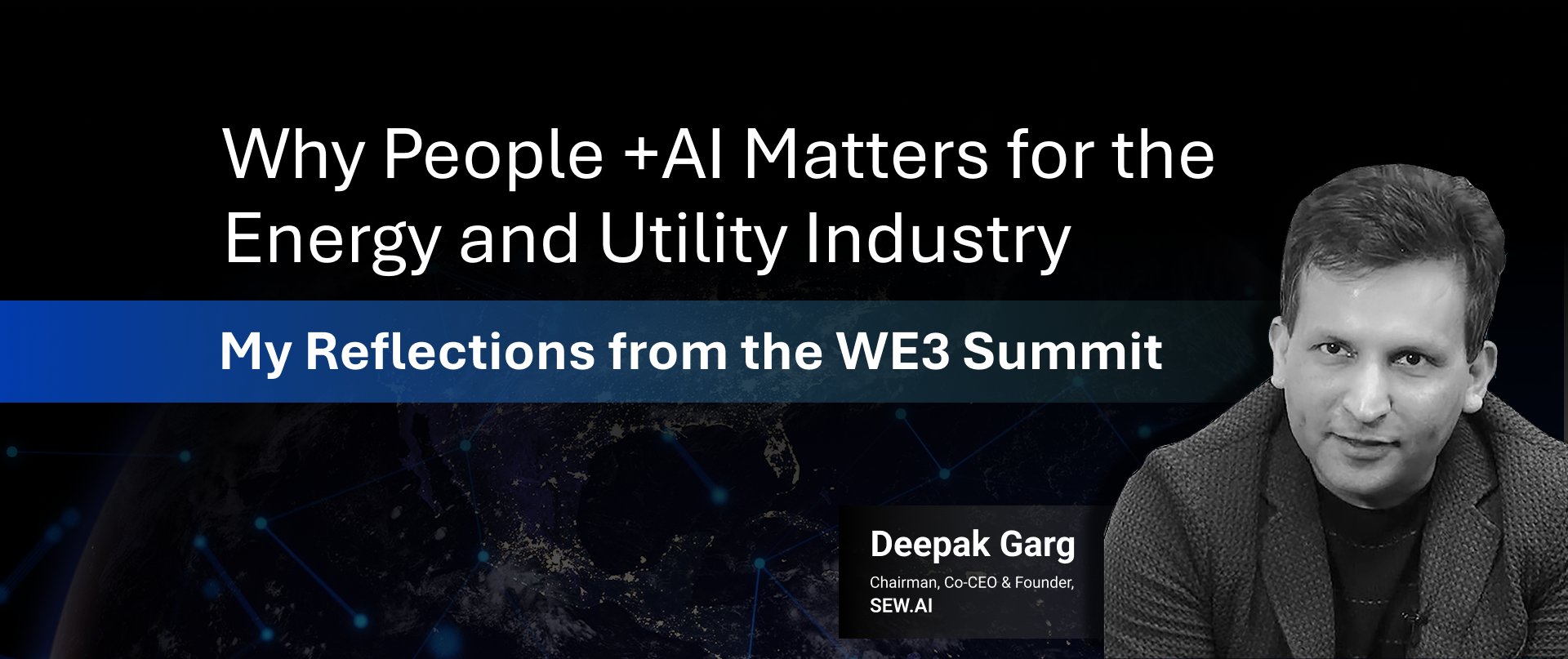Master Blog
The Next Frontier in Sustainability:
AI-Driven Energy & Water Disaggregation

Talking about sustainability often relates to clean energy, a green ecosystem, responsible energy-water consumption, electric vehicles, net-zero goals across the globe, and so forth. While we always highlight all the instrumental values to address the rising concerns for sustainable consumption, we have something special today!
The majority of energy and water is wasted due to heat dissipation, leakage sources, and mismanaged consumption. While responsible consumption, optimizing energy generation, and clean water supply are instruments that help accelerate sustainability and reduce wastage, the question arises: How can utilities effectively implement them for energy generation, transmission, and safe water supply for customers?
Leveraging the Power of Artificial Intelligence, Machine Learning, and Analytics
Traditional energy consumption and water supply monitoring methods lack the understanding and availability of granular-level data. These data points enable effective detection of anomalies, water leakages, energy leakages, and more. Because the efforts are manual, the insights aren’t as effective as desired in optimizing the energy and water operations.
Harnessing the power of AI/ML and Analytics, this innovation is revolutionizing utility operations and energy-water consumption by providing intelligent insights. Integrating data from various sources in real-time – including home appliances and operational equipment – enables visibility into energy and water usage, driving consumption behaviour changes and promoting resource consciousness. This is what disaggregation technology is all about!
Let’s dive deep into how it is enabling sustainable energy and water distribution and consumption.
Disaggregation FOR Excellent Customer Experience
What does it do?
AI-powered disaggregation enables appliance-level data collection of usage. Unlike the traditional method, which has ‘no way of knowing the exact energy and water usage of an appliance,’ the technology enables detailed insights into individual appliance-level usage patterns.
How does it benefit?
The resultant insights help utilities create personalized communications for customers. These communications help customers consume energy and water responsibly while also providing them with transparency about their consumption. This win-win situation benefits both stakeholders and the environment, enabling utilities to understand their customers and serve them beyond the experience they expect.
Disaggregation FOR Optimizing Utility Operations
What does it do?
As we previously discussed, utilities have to make manual efforts to detect leakages and excessive heat dissipation due to faulty equipment, and leakage detection has been tedious. Inserting AI technology, energy, and water disaggregation eliminates this effort to help detect anomalies.
How does it benefit?
AI enables reduced detection time, while tons of energy are lost in generation and distribution. The accuracy in leakage and anomaly detection allows prompt diagnosis and reduced wastage in utility operations. No one likes to put in 100% effort only to expect 40% output while the remaining 60% is lost in translation!
Disaggregation FOR DERs and eMobility Enablement
What does it do?
Customers are moving towards the ‘Green Revolution.’ As the reliance on traditional sources such as fossil fuels decreases, new-age concepts such as distributed energy resources (DERs) and eMobility (EVs) are emerging. Energy disaggregation is vital for integrating the insights of regular consumption data with the energy grid.
How does it benefit?
Distributed energy resources, including eMobility, have numerous applications, from acting as a microgrid and powering homes to enabling load balancing. With visibility into the consumption pattern, energy disaggregation enables efficient energy distribution from DERs to the houses and buildings to the grid, enabling optimized energy flow.
Disaggregation FOR Personalized Programs and Decision-Making
What does it do?
Since AI enables insights into trends and behavior of appliance-level consumption, utilities are equipped with vast information to develop the next best steps for customer experience and utility operations.
How does it benefit?
Data is the new oil; in this case, it is ‘literally the new oil.’ These granular-level data enable utilities to craft custom and personalized energy and water consumption programs and incentives to help consumers benefit from and save from their regular usage. Additionally, data-driven decision-making empowers optimizing operations and the grid without manually diagnosing the issue from scratch.
As energy and water demand rise and climate change concerns intensify, energy and water disaggregation are true disruptors enabling the sustainability shift. As we move ahead, utilities need to collect and refine more data with emerging technologies such as artificial intelligence, machine learning, and analytics; the data gathered will ultimately increase the accessibility and accuracy of energy and water disaggregation solutions —from load management for the grid to the next-best action for the end consumers!
SEW’s Smart Disaggregation Platform is a comprehensive platform for analyzing granular energy and water consumption data. This platform combines the power of data analytics, artificial intelligence (AI), and machine learning (ML) to provide valuable insights into individual appliance-level usage patterns. With intuitive user interfaces and personalized recommendations, it enhances customer experience and promotes energy and water efficiency. Additionally, the platform integrates with demand response programs, electric vehicles, and renewables to facilitate effective load management, recommend the next best actions, and drive superior customer experiences.





